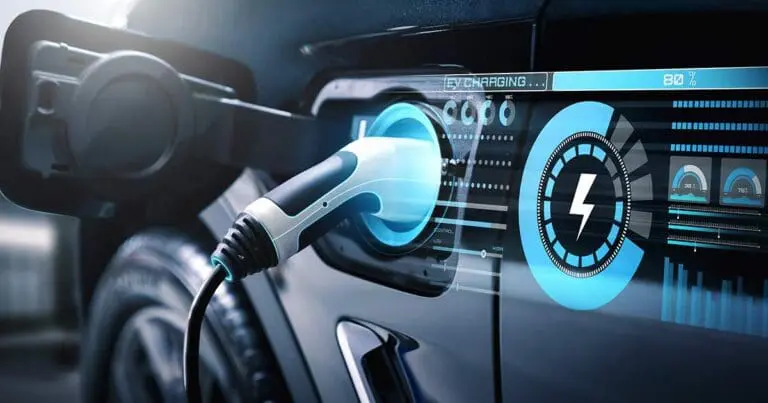As we stand at the precipice of a transformative era in transportation, the concept of autonomous EV infrastructure takes center stage. This revolutionary shift is not only reshaping how we move but also redefining the very fabric of urban planning and our daily lives. At the heart of this transformation lies the seamless integration of autonomous vehicles and electric vehicle (EV) technology, poised to create a more sustainable and efficient future.
The journey towards a comprehensive autonomous EV infrastructure is a multifaceted endeavor, demanding innovation, collaboration, and foresight. As we delve into this subject, we will explore the key components that constitute this infrastructure, examine the challenges and opportunities it presents, and consider the implications for society at large. From charging networks to smart city planning, the future of autonomous EVs promises to be as exciting as it is complex.

Understanding Autonomous EVs
Autonomous EVs, or self-driving electric vehicles, represent the convergence of two groundbreaking technologies: automation and electrification. This synergy promises not only to revolutionize personal transportation but also to address pressing environmental concerns. With climate change and urban congestion becoming increasingly urgent issues, the need for cleaner, more efficient transportation solutions has never been greater.
Autonomous EVs offer several advantages, including reduced emissions, improved safety, and enhanced accessibility. By eliminating the need for human drivers, these vehicles can operate with unparalleled precision, reducing the risk of accidents and optimizing traffic flow. Furthermore, their electric powertrains contribute to a significant reduction in greenhouse gas emissions, aligning with global efforts to combat climate change.
Key Components of Autonomous EV Infrastructure
The development of a robust autonomous EV infrastructure hinges on several critical components, each playing a vital role in ensuring the seamless operation of self-driving EVs. These components include:
- Charging Infrastructure: A comprehensive network of charging stations is essential to support the widespread adoption of electric vehicles. Fast-charging capabilities and strategically placed charging points will enable EVs to travel longer distances without range anxiety.
- Connectivity: Autonomous EVs rely on advanced communication systems to interact with each other and with the surrounding infrastructure. This connectivity enables real-time data sharing, enhancing safety and efficiency.
- Smart Cities: The integration of autonomous EVs into urban environments requires intelligent city planning. Smart traffic management systems, dedicated lanes, and adaptable infrastructure are crucial for the successful deployment of self-driving vehicles.
- Regulatory Frameworks: Establishing clear regulations and standards for autonomous EVs is essential to ensure safety and public trust. These frameworks must evolve alongside technological advancements to remain relevant.
Challenges in Building Autonomous EV Infrastructure
While the potential benefits of autonomous EV infrastructure are immense, several challenges must be addressed to realize its full potential. These challenges include:
- Technological Hurdles: The development of reliable autonomous driving technology remains a complex task. Ensuring that these systems can operate safely in diverse and unpredictable environments is a significant challenge.
- Infrastructure Costs: Building the necessary infrastructure for autonomous EVs requires substantial investment. Governments and private entities must collaborate to fund and implement these projects effectively.
- Public Acceptance: Gaining public trust and acceptance of autonomous EVs is crucial for their widespread adoption. Education and awareness campaigns can help alleviate concerns and highlight the benefits of this technology.
For more on how the chip shortage impacts EVs, visit this insightful article.
Opportunities in Autonomous EV Infrastructure
Despite the challenges, the development of autonomous EV infrastructure presents numerous opportunities for innovation and growth. These opportunities include:
- Economic Growth: The deployment of autonomous EVs can stimulate economic growth by creating new industries and jobs. From manufacturing to maintenance and software development, the potential for job creation is substantial.
- Environmental Benefits: The widespread adoption of electric vehicles can significantly reduce carbon emissions, contributing to a cleaner and more sustainable environment. This shift aligns with global efforts to combat climate change and promote renewable energy sources.
- Improved Mobility: Autonomous EVs have the potential to enhance mobility for all, including those with limited access to traditional transportation. This inclusivity can improve quality of life and increase independence for many individuals.
Discover more about the trends in EV software innovation and their implications for the future.
The Role of Policy and Regulation
Effective policy and regulation are fundamental to the successful implementation of autonomous EV infrastructure. Governments must establish clear guidelines and standards to ensure safety, security, and public confidence in autonomous EV technology.
Regulatory Frameworks
Regulations must evolve alongside technological advancements to remain relevant and effective. This includes setting standards for vehicle safety, data privacy, and cybersecurity. Collaborative efforts between governments, industry stakeholders, and researchers are essential to develop comprehensive regulatory frameworks.
Incentives and Support
Governments can play a crucial role in promoting the adoption of autonomous EVs by offering incentives and support. This may include tax breaks, grants, and subsidies for manufacturers and consumers. By fostering a favorable environment, policymakers can accelerate the transition to autonomous EVs.
For a deeper understanding of the impact of digital twins in EV production, explore the detailed insights provided here.

Technological Innovations Driving Autonomous EVs
The advancement of autonomous EV infrastructure is closely tied to technological innovations that enhance vehicle performance, safety, and efficiency. Key innovations include:
- Artificial Intelligence: AI is at the core of autonomous driving technology, enabling vehicles to perceive, analyze, and respond to their environment with precision.
- Machine Learning: Machine learning algorithms allow autonomous EVs to continuously improve their performance by learning from real-world experiences.
- Sensor Technology: Advanced sensors, such as LiDAR and radar, provide critical data for autonomous navigation, ensuring safe and accurate operation.
For more on the electrification of the transportation sector, visit the International Energy Agency’s comprehensive analysis.
FAQs on Autonomous EV Infrastructure
Here are some frequently asked questions about autonomous EV infrastructure:
- What are autonomous EVs? Autonomous EVs are self-driving electric vehicles that combine automation and electrification to provide efficient and sustainable transportation solutions.
- What challenges does autonomous EV infrastructure face? Key challenges include technological hurdles, infrastructure costs, and public acceptance.
- How can governments support autonomous EV infrastructure? Governments can support this transition by establishing clear regulatory frameworks and offering incentives to encourage adoption.
As we embrace the future of transportation, autonomous EV infrastructure promises to transform our cities, our environment, and our daily lives. By overcoming challenges and seizing opportunities, we can build a more sustainable and efficient world for generations to come.





